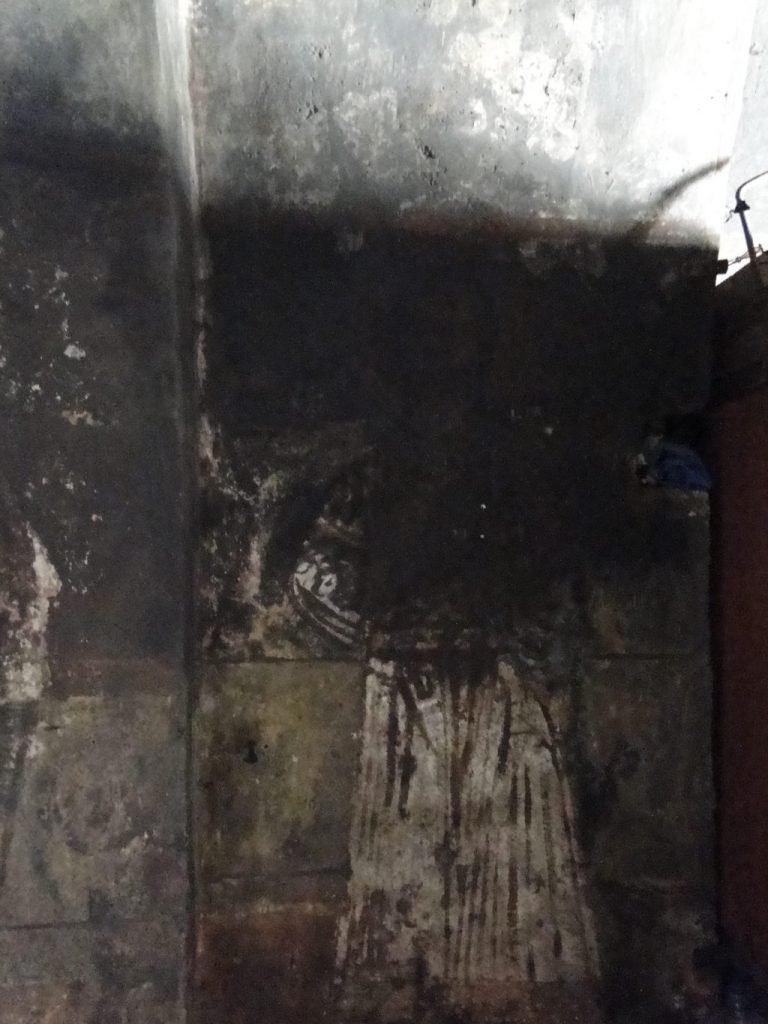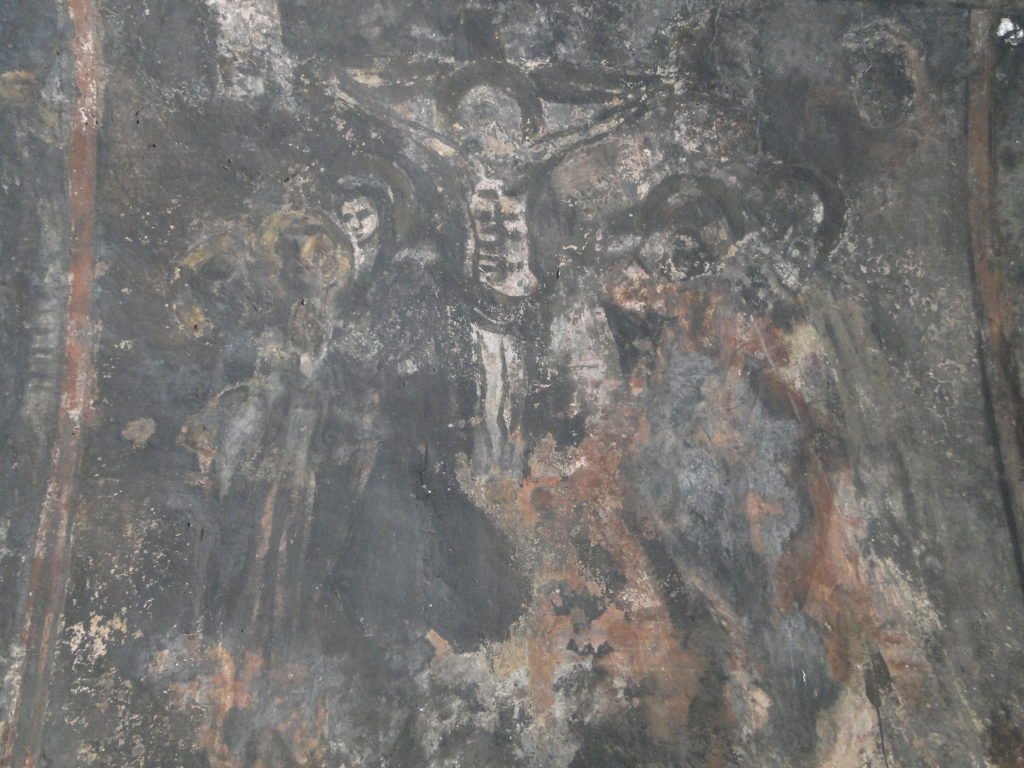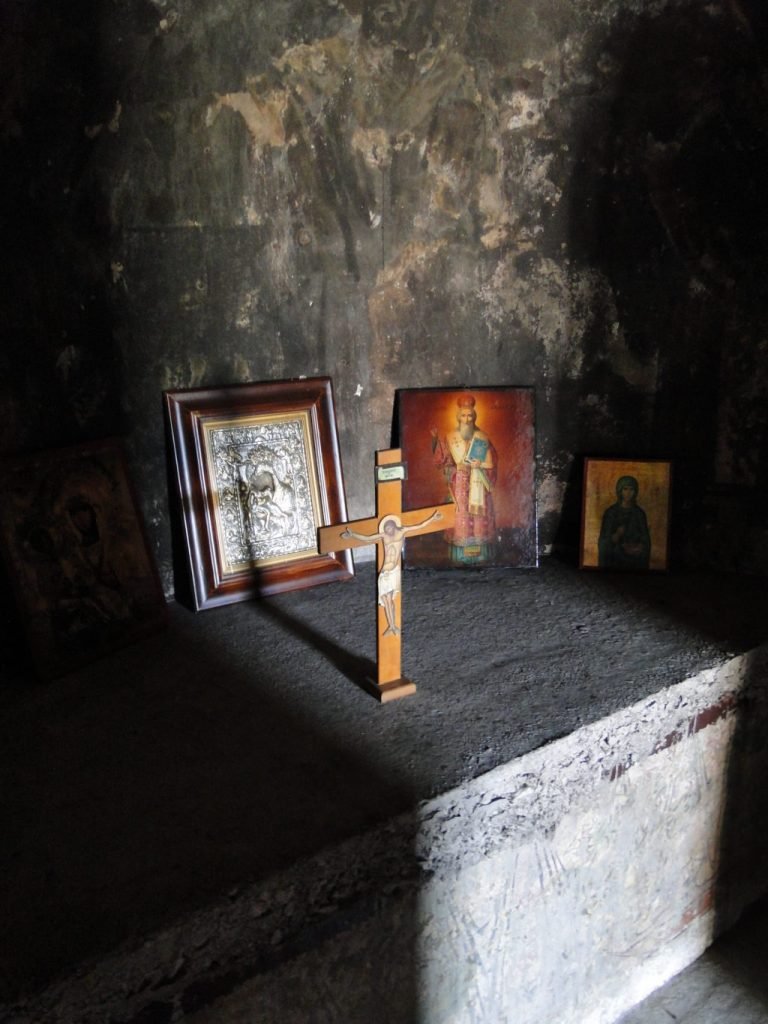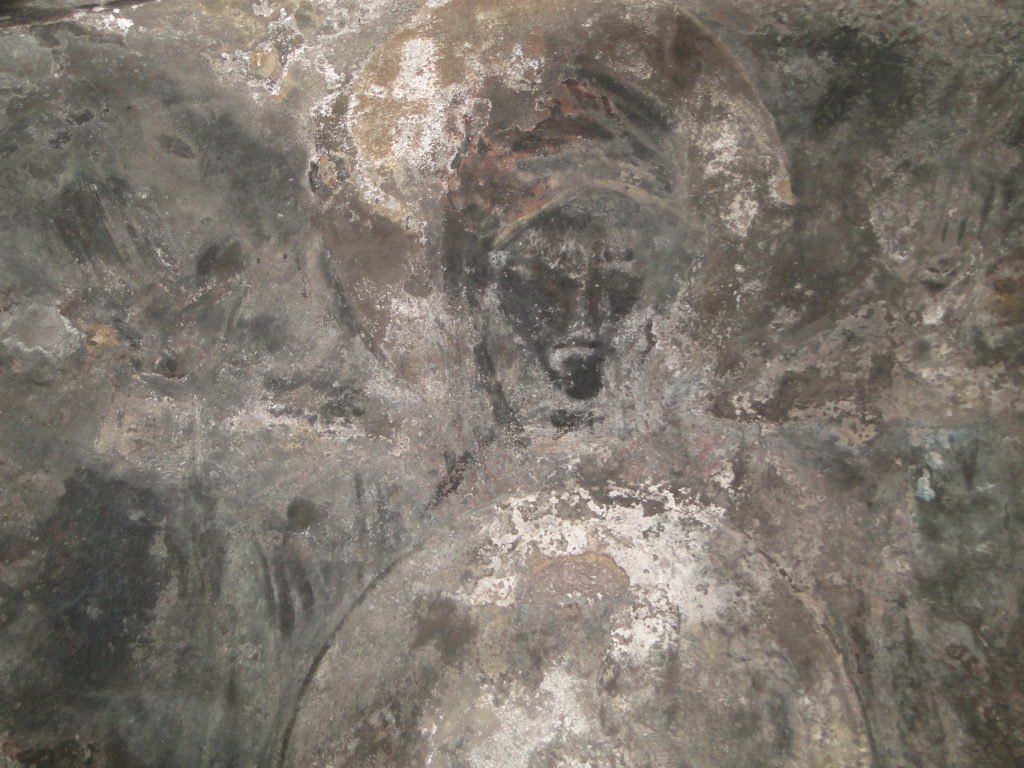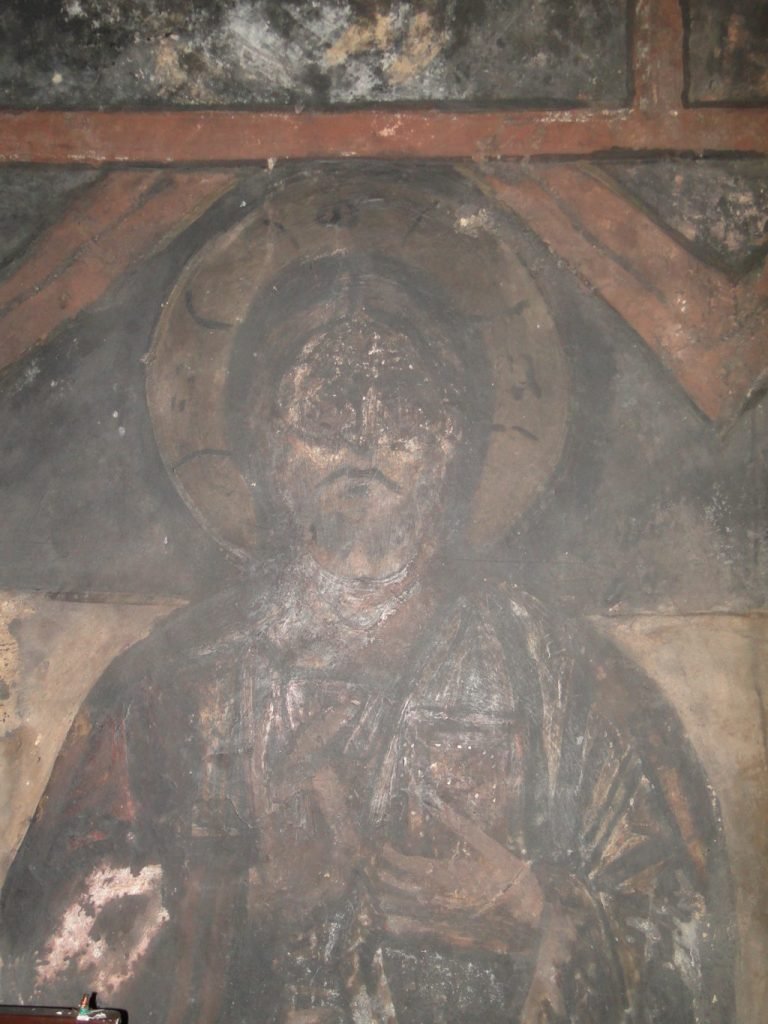SAINT IOANNIS THE THEOLOGIAN
Historic chapel of Agios Ioannis the Theologian
A few meters from the shore, approaching the beach of Pili, is the chapel of Agios Ioannis the Theologian, built in the 1350s and is of great interest in its frescoes. Unfortunately, this small church, which should be preserved because it is unique in its kind, has been repeatedly vandalized by fewer than the Turks and more by modern or older archaeologists as well as narrow-minded religious “censors”. It is a small and simple church, with its presence, neatly connected to the surrounding area. It is built on a plateau about fifty meters from the sea, at the foot of the mountain, which rises to the east.

The small Saint Ioanni’s church belongs to the category of the so-called palaeological temples. This is the name of the temples, which were built during the Late Byzantine period (13th-15th century) (or the period of Frankish rule) when the family of the Palaeologans was on the throne of the Byzantine Empire. It is a tiny church with dimensions: Length about 5 m, width 3.5m. and height 2.5 m. has no windows, except for a small slit (notch) just above the front door, perhaps to let in sunlight from noon and beyond, while its walls have an unusual, for current data, thickness (about 70 cm.). Someone would say that it would be a Small Fortress during the Turkish occupation if it were not a church. Indeed, the masonry gives the impression that it was made to withstand external attack. As is the case with many Greek churches, we have such an entrance structure, which prohibits the entry of large animals (mainly horses). In other words, it has a narrow entrance, through which one enters the Temple, after first descending a step of about 15 cm. These constructions, or reconstructions, were made during the Turkish occupation to prevent the conquerors from their habit of using the Christian churches as stables for horses.
The researcher and author Theodoros Skouras, writes the following about the church in his book "Byzantine monuments of Evia":
“… The floor is two steps lower than the ground, and all the walls are painted with exquisite paintings. Smugglers have raided it. Ten years ago, they had dug behind the sanctuary, eight years ago, they stole the icon of Agios Ioannis the Theologian in which he was depicted “with the student of Prochoros and on May 25th of 1988, they dug a pit of a meter and 80 cm deep inside the church “
The first impression that someone has from the inside of the church is dark, if not black! The interior is unclear, and the visitor’s eyes must first get used to it, which is then transferred from daylight to darkness, of the small Temple without windows and electric light.
As soon as the visitor gets acquainted with space, he notices that the wall and the dome of both the main church and the Holy Table are eroded. Signs of the fire, which according to the oral tradition, were put by the Turkish occupiers. According to more official versions, the erosion of the interior of Saint Ioannis is due to a long time concerning the conditions created by the combination of the humid climate of the coastal area and how the small Temple is built. Of course, no one rules out that both cases may apply, which has thus brought to the current situation the church’s interior. Despite the efforts of time and people, some of the frescoes that adorn the entire interior of the Temple have been preserved in almost good condition. The vigilant figure of the Pantocrator dominates the vault. In the northern part, there are representations from the Holy Passions. The Crucifixion, the Burial, and the Godman’s Resurrection are represented in this part of the Temple. There are the strict and ascetic figures of saints on the south wall, whose names are no longer distinguished in the old-fashioned and worn-out fresco. At the base of the same fence and throughout its height, there is a painting representation of hell scenes, as created by the popular imagination. In this strip, the illustration depicts the punishments of the miller and the wine seller who stole their customers. The miller has the millstone on the neck, while the wine seller has the barrel.
Murals also cover the entire Holy Table, as previously mentioned, without clearly showing their sights. There is also the information from the Office of Byzantine Antiquities that the church of Saint Ioannis is perhaps the only church in Greece of this period with the frescoes covering the entire interior. This fact and the uniqueness of the depiction of scenes of hell make this chapel extremely interesting from an archaeological and historical point of view. Who, then, was the creator of these murals? Nowhere is the signature of the painter-hagiographer who painted them. According to some sources, it is probable that the artist was an amateur Italian painter who was in the area during the Frankish period. Also, there is information from the office of Byzantine Antiquities that these murals are the “first hand” of the hagiographer, which they have not undergone other interventions.
We must say that residents and visitors, who are sensitive to this church’s history, have a disappointing feeling about the abandonment of this monument.
